Prejudices against Sinti and Roma are widespread in Germany. To change this, is now working on a Commission for the Federal government’s recommendations for action. But the fight against anti-Gypsyism is tough.
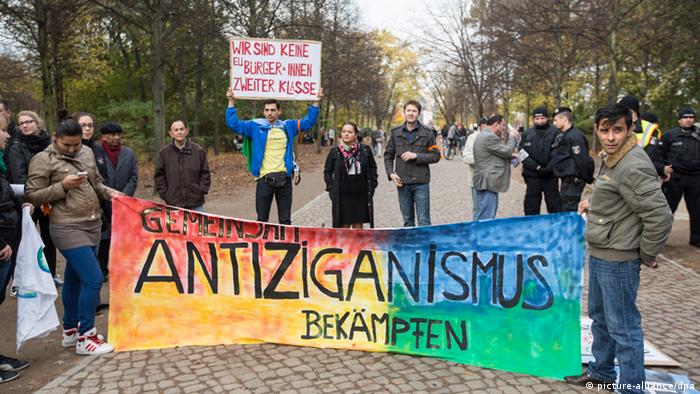
Demonstration against Sinti-and-Roma hostility in Berlin (2013)
Sinti and Roma are at home in Germany for hundreds of years. However, they are not perceived, until today, often as a part of the society, on many levels, discrimination and exclusion. This issue should now be used by the Federal government-appointed Commission anti-Gypsyism. The eleven-member group of experts has taken this week. By the beginning of 2021, you should provide a report with recommendations for action, to racism directed against Roma, Sinti, travellers, yenish and other persons who are stigmatised as “Gypsies”.
A member of the Commission, Frank Reuter of the research is to place anti-Gypsyism at the University of Heidelberg: “the whole of society, as well as in science, the topic has been neglected for a long time,” says the historian. Alone to the genocide of the Nazis against the Sinti and Roma officially as such was recognized, it took decades. “They had different power, for example, the Jews, just anyone who has to be strong for them.”
-
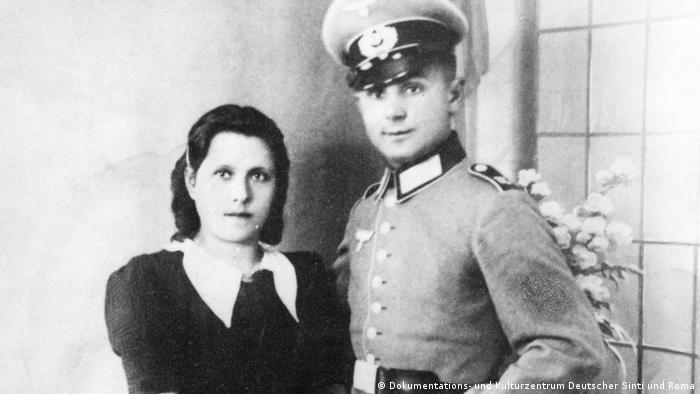
Long overlooked: the genocide of the Sinti and Roma
In use for the people and the Fatherland
Many German Sinti had not only served in the First world war for the Empire, they fought from 1939 in the Wehrmacht. In 1941, the high command ordered “from racial-political reasons”, the “discharge of Gypsies and Gypsy Mischlinge from active military service”. Alfons was Lampert afterwards, together with his wife Else deported to Auschwitz, where both died.
-

Long overlooked: the genocide of the Sinti and Roma
Measured and recorded by the race researchers
The nurse Eva Justin learned the Romani language, in order to win the trust of the minority. In the Wake of the race researcher Robert knight, she moved across the country to measure people and to register fully as a “Gypsy” and “Gypsy half-breeds” – the basis for the genocide. They explored the phylogenetic relationships and evaluated the baptismal registers of the churches.
-

Long overlooked: the genocide of the Sinti and Roma
Locked up and disenfranchised
Like here in Ravensburg in South West Germany Sinti and Roma have been locked families at the end of the 1930s in many places in Camps on the outskirts of the city, fenced with barbed wire, controlled by Dog handlers. No one was allowed to leave his place of residence. Pets were killed, the people had to perform forced labour. Many were forcibly sterilized.
-

Long overlooked: the genocide of the Sinti and Roma
Deportation in Public
In may 1940, Sinti and Roma families from South – Western Germany were brought through the streets of Asperg train station and from there directly into the occupied Poland deported. In the CID report stated: “The evacuation process went smoothly.” For most of the deportees, it was a journey into death, they died in labor camps and Jewish Ghettos.
-
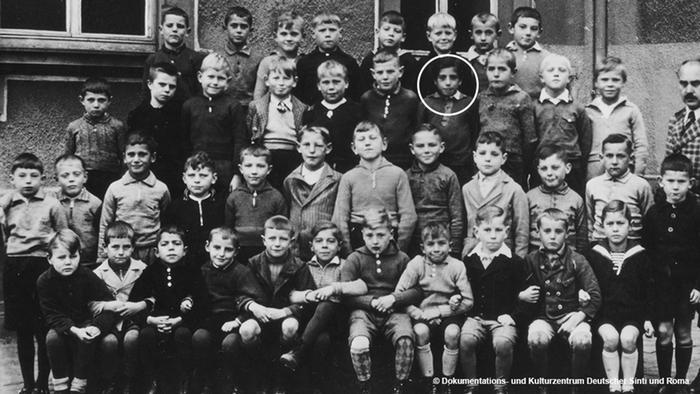
Long overlooked: the genocide of the Sinti and Roma
Of the school to Auschwitz
Karl Kling on a class photo of the people’s school in Karlsruhe at the end of the 1930s. In the spring of 1943 he was picked up during the lesson and to the “Gypsy camp” of Auschwitz-Birkenau, where he fell victim to genocide. Survivors reported that they have not been informed prior to the Deportation in the schools excluded and partially.
-

Long overlooked: the genocide of the Sinti and Roma
The responsibility of a mayor
The mayor of Herbolzheim requested, 1942, the “removal” of the Sinti family Spindler. 16 members of the family were deported to Auschwitz, survived by two. 60 years later, mayor Ernst Schilling explained the events. The city reminds of the Murdered. Schilling says he became aware of how much responsibility a mayor for the lives of people.
-

Long overlooked: the genocide of the Sinti and Roma
Murder and persecution across Europe
Where Nazi Germany had the rule been followed, the minority. Sinti and Roma have been included in the “Gypsy camp” or with the Jews in Ghettos such as Warsaw, in “extermination camps” were deported and murdered. It is estimated that up to 500,000 people were killed in shootings, Gas, Starvation, diseases, medical experiments or any other acts of violence.
-

Long overlooked: the genocide of the Sinti and Roma
Lie at the entrance gate
“I can work”, thought the 9-year-old Hugo to hell pure from Munich, when he came in 1943 as thousands of others with the family in a cattle car to Auschwitz. The lettering “Arbeit Macht frei” was hope, he recalled later. He wanted to help his father at Work: “Then we come back.” Only about one in Ten survived deported to Auschwitz.
-
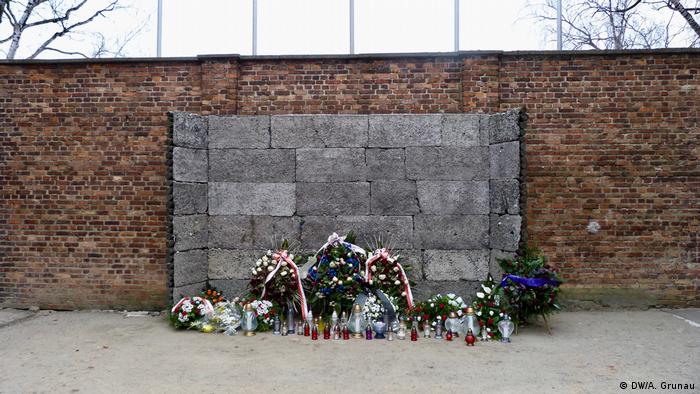
Long overlooked: the genocide of the Sinti and Roma
The Black Wall
Known by name 54 Sinti and Roma, who were executed in 1943, in front of the Black wall in the yard of the Auschwitz main camp between Block 10 and the block 11 by the SS people-including young people. In The Book “Auschwitz. The history of the extermination camp,” writes Susanne Willems: “Johann Betschker you murdered on 29. July 1943, at the age of 16. Birthday.”
-

Long overlooked: the genocide of the Sinti and Roma
“The camp road was littered with dead”
“In a barrack, which would have perhaps had space for 200 people, were often housed 800 and more,” recalled Elisabeth Guttenberger, “the hell was that.” 40 barracks there were in the “Gypsy camp” in the section BIIe, a Block was “the toilet for the whole camp”. Franz Rosenbach, then 15 and forced laborers, said: “The camp road from Birkenau was littered with the dead.”
-
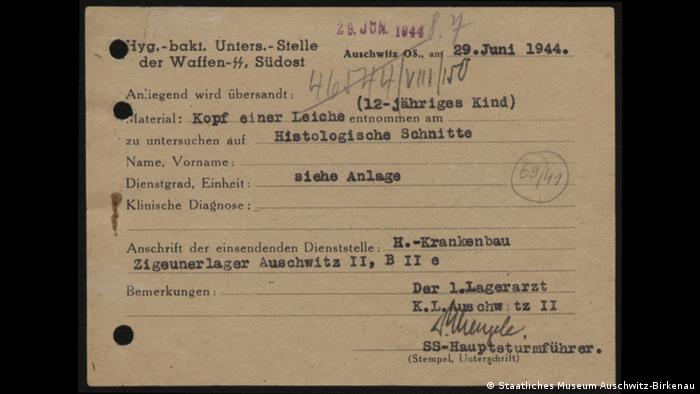
Long overlooked: the genocide of the Sinti and Roma
“Head of a body (12-year-old child)”
SS doctor Josef Mengele was camp doctor in section BIIe. He and his colleagues tortured countless prisoners. You mutilated children, infected pair with diseases, conducted research on twins and killed them with injections to the heart. Eyes, organs and whole body parts sent Mengele to Berlin. In June 1944, he sent the head of a 12-year-old child. He was never before the court.
-

Long overlooked: the genocide of the Sinti and Roma
Ashes of the Murdered
The prisoners suffered from Hunger, thirst, cold, disease, and brutal violence. Small children and old people died first. The sick were murdered in the gas chambers. The bodies were burned. In the “Gypsy camp” in Auschwitz-Birkenau, one could see the smoke of the crematoria, and smell. The ashes of the dead was also sunk in such ponds, where the members lay down flowers today.
-

Long overlooked: the genocide of the Sinti and Roma
Liberation – it’s too late for Sinti and Roma
As the Red army on 27. January, reached in 1945 of Auschwitz, met you there on prisoners children. For Sinti and Roma, the liberators were late. Already on the night of 3. August 1944, the camp administration drove the remaining people from the “Gypsy camp” in the gas chambers. Two children came in the Morning after the night of the murder crying from the barracks, they were “counterfeit”.
-
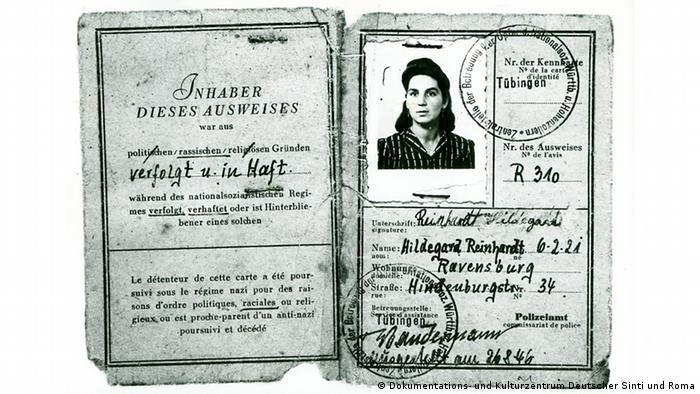
Long overlooked: the genocide of the Sinti and Roma
Racial and followed
After the liberation from the concentration camps by allied or German Authorities were Survivors of certificates of racial persecution and the concentration camp imprisonment. Later, many of the to listen to had to, you had only been as a Criminal pursued, applications for compensation were rejected. Hildegard Reinhardt has lost in Auschwitz, their three small daughters.
-

Long overlooked: the genocide of the Sinti and Roma
Hunger strike against the criminalisation
At the beginning of the 1980s, the representatives of the Sinti and Roma knew no more advice. With a hunger strike on the site of the former concentration camp of Dachau concentration camp Survivors fought against the criminalization of minorities and the recognition of the Nazi persecution. In 1982, Chancellor Helmut Schmidt stated officially that Sinti and Roma were victims of a genocide.
-

Long overlooked: the genocide of the Sinti and Roma
Place of remembrance in Berlin
In the vicinity of the Federal Parliament in 2012, was created in Berlin’s Tiergarten Park, the memorial for the in the time of the Sinti and Roma. Associations call on particularly at the world Roma day to combat anti-Gypsyism. This hostility of the majority society even today, many members of the minority in Germany and Europe.
Author: Andrea Grunau
Reuter has worked prior to his current role a long time at the documentation centre of the Sinti and Roma in Heidelberg. The intensive meetings and conversations he had with Survivors of the genocide, are one of the main reasons why he is involved in the Commission of experts: “This work was both scientifically as well as humanly very memorable and has me reminded of the devastating consequences of anti-Gypsyism.”
“Everyday racism is very frustrating”
Among the experts in the panel are also members of the Sinti and Roma, the Reuter reported. A piece of Information that does not appear in the official press statement of the Federal interior Ministry for the establishment of the Commission anti-Gypsyism. This point was not irrelevant, the book author Bluma Meinhardt: “I welcome the Initiative of the Federal government, but please, please don’t talk only about us but also with us.”
The 57-year-old Sinteza comes from Wuppertal, lives a long time in the Netherlands, where they feel as members of the Sinti and Roma are significantly less discriminated against: “If I go to Germany in the supermarket, I notice the suspicious glances as if to say ‘Steal it?’. This everyday racism is very frustrating and probably the reason why many isolate.”
Another example of the discrimination of Roma and Sinti in the case of a flat is to search Sinteza, several media recently reported. Accordingly, the woman was rejected because of their ethnic affiliation of a housing Association as a trainee, according to an internal note from the company: “Slight Gypsy accent; better not to offer!”
On the image of the poverty of migrants is reduced
The caricature about Sinti and Roma that has prevailed for decades in the minds of the majority society, is this: poverty, unemployment, crime. A Germany-wide study of 2018 shows that such prejudices are widespread. More than 60 percent of the approximately 2500 respondents agree with the statement, for example, Sinti and Roma would tend to “crime”.

In this case, the cliché of life is doing in precarious conditions of Sinti and Roma in two ways wrong. The idea resonates with often that the persons concerned are on their Situation to blame themselves. The situation of many Sinti and Roma are today is just a consequence of their lack of Opportunity and discrimination.
So Bluma Meinhardt told, for example, her father had not been allowed to go as a Sinto to school and was therefore never taught to read and write. Therefore, he did not make it – as a former inmate of several concentration camps after the Second world war, a long time, to make compensation payments claims – apart from all the other problems that brings to a life as illiterate and traumatized man.
The Commission has a mammoth task in front of you

Commission Member Reuter: “Devastating Consequences”
On the other, life is not all Sinti and Roma, as it is often portrayed. “In Germany there are different groups of Sinti and Roma, both under the Old as well as among the immigrants. You can by no means speak of a homogeneous reality of life,” said Commission member Reuter. “If a Bank employee or a civil servant goes past you, you would never think the Person could be a Sinteza or Romni. You, however, it is perhaps – and retains good reasons for your identity.”
In spite of all the improvements of recent years, the Heidelberg historian, still has an effect powerful anti ziganistische bias structure that is not anchored only in the minds of the Individual, but also in the institutional Act. To analyze this, and then the measures – for example in the area of education – to bring out, to break it open, this is the mammoth task of the Commission anti-Gypsyism.
The Federal government has used the panel of experts for this purpose, shows from the point of view of Frank Reuter, the politics of the issue, in the meantime, seriously, “interior Minister Seehofer has not brought in all the clarity that we write this report, for the trash, but that it should lead to political Action.”
Watch the Video 05:25 Parts
Ukraine: attacks on Roma
Facebook Twitter google+ send Tumblr VZ Xing Newsvine Digg
Permalink https://p.dw.com/p/31uDa
Ukraine: attacks on Roma


















